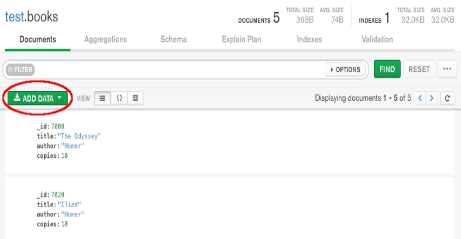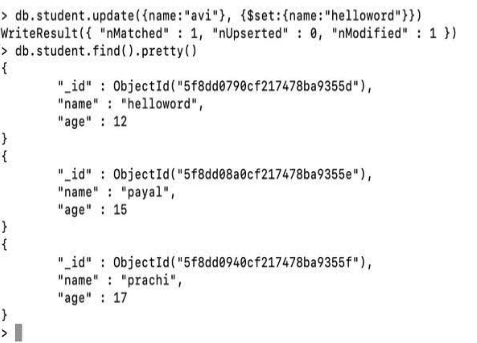In today’s world, data is the new oil, and data engineering has become an integral part of the data science workflow. With the rise of big data and the need for scalable and flexible data storage solutions, NoSQL databases have gained popularity over traditional relational databases.
In this blog, we will explore how NoSQL databases can be leveraged for data engineering and demonstrate it through code examples.
Introduction to NoSQL Databases
NoSQL databases are non-relational databases that provide a flexible schema design, high scalability, and availability. They are designed to handle massive amounts of unstructured or semi-structured data, which cannot be efficiently managed by traditional relational databases.
There are several types of NoSQL databases, including document-oriented, key-value, column-family, and graph databases. In this blog, we will focus on document-oriented databases, such as MongoDB, which store data in a semi-structured document format, such as JSON or BSON.
Why Use NoSQL Databases for Data Engineering?
NoSQL databases offer several advantages over traditional relational databases for data engineering:
- Flexible Schema Design: NoSQL databases allow for a flexible schema design, where each document can have a different schema. This is particularly useful when dealing with unstructured or semi-structured data, as it allows for the storage of data without the need for a predefined schema.
- Scalability: NoSQL databases are designed to scale horizontally, which means that they can handle large amounts of data by adding more nodes to the cluster. This allows for high scalability, which is essential for big data applications.
- Availability: NoSQL databases are designed to be highly available, which means that they are able to withstand hardware or software failures and continue to operate without interruption.
- Performance: NoSQL databases are designed to provide high performance for read and write operations, which is essential for real-time data processing applications.
Using MongoDB for Data Engineering
MongoDB is a popular document-oriented NoSQL database that provides a flexible schema design, high scalability, and availability. In this section, we will explore how MongoDB can be used for data engineering and demonstrate it through code examples.
Installation and Setup
To get started with MongoDB, you will need to install it on your system. You can download the community edition of MongoDB from the official website
(https://www.mongodb.com/try/download/community).

Once you have installed MongoDB, you can start the MongoDB server by running the following command in a terminal:
mongod
This will start the MongoDB server on the default port 27017. You can connect to the MongoDB server using the MongoDB shell by running the following command in a separate terminal:
mongo
This will start the MongoDB shell, where you can execute MongoDB commands and interact with the MongoDB server.
Creating a Database and Collection

In MongoDB, data is organized into databases and collections. A database is a logical container for collections, and a collection is a set of documents. To create a new database and collection, you can execute the following commands in the MongoDB shell:
use mydatabase
db.createCollection(“mycollection”)
This will create a new database named “mydatabase” and a new collection named “mycollection” in that database.
Inserting Data

To insert data into a MongoDB collection, you can execute the following command in the MongoDB shell:
db.mycollection.insertOne({name: “John Doe”, age: 30})
This will insert a new document into the “mycollection” collection with the fields “name” and “age”.
Querying Data

To query data from a MongoDB collection, you can execute the following command in the MongoDB shell:
db.mycollection.find()
This will retrieve all documents from the “mycollection” collection. You can also filter the results based on specific criteria, as shown in the following example:
db.mycollection.find({age: {$gt: 25}})
This will retrieve all documents from the “mycollection” collection where the “age” field is greater than 25.
Updating Data

To update data in a MongoDB collection, you can execute the following command in the MongoDB shell:
db.mycollection.updateOne({name: “John Doe”}, {$set: {age: 35}})
This will update the “age” field of the document with the name “John Doe” in the “mycollection” collection to 35.
Deleting Data

To delete data from a MongoDB collection, you can execute the following command in the MongoDB shell:
db.mycollection.deleteOne({name: “John Doe”})
This will delete the document with the name “John Doe” from the “mycollection” collection.
Leveraging NoSQL Databases for Data Engineering
Now that we have explored the basics of MongoDB, let’s look at how we can leverage NoSQL databases for data engineering.
One of the primary use cases of NoSQL databases for data engineering is storing and processing large amounts of unstructured or semi-structured data.
For example, suppose you have a dataset of customer reviews for a product, where each review is a semi-structured document with fields such as “reviewer name,” “review text,” and “rating.” In that case, you can store this data in a MongoDB collection and perform various data engineering tasks on it, such as data cleaning, feature extraction, and sentiment analysis.
Let’s take a look at some code examples of how we can perform data engineering tasks on a MongoDB collection.
Data Cleaning
Data cleaning is an essential data engineering task that involves removing noise, errors, and inconsistencies from the data. In the case of MongoDB, data cleaning can involve removing null or missing values, removing duplicates, and standardizing the data format.

Suppose we have a MongoDB collection of customer reviews with the following fields:
{
“_id”: ObjectId(“608f4ddc4bb13b4a4b0e6d9c”),
“reviewer_name”: “John Doe”,
“review_text”: “This product is amazing!”,
“rating”: 5
}
To remove null or missing values, we can execute the following command in the MongoDB shell:
db.reviews.deleteMany({review_text: null})
This will delete all documents from the “reviews” collection where the “review_text” field is null.
To remove duplicates, we can execute the following command in the MongoDB shell:
db.reviews.aggregate([{$group: {_id: “$review_text”, count: {$sum: 1}, dups: {$addToSet: “$_id”}}}, {$match: {count: {$gt: 1}}}, {$limit: 100}]).forEach(function(doc) {doc.dups.shift(); db.reviews.remove({_id: {$in: doc.dups}})})
This will remove all duplicate documents from the “reviews” collection based on the “review_text” field.
To standardize the data format, we can execute the following command in the MongoDB shell:
db.reviews.updateMany({}, {$rename: {“reviewer_name”: “name”, “review_text”: “text”, “rating”: “score”}})
This will rename the fields “reviewer_name” to “name,” “review_text” to “text,” and “rating” to “score” for all documents in the “reviews” collection.
Feature Extraction
Feature extraction is another important data engineering task that involves identifying and extracting relevant features or attributes from the data. In the case of MongoDB, feature extraction can involve extracting text features such as word frequency, n-grams, and sentiment analysis scores.

Suppose we want to extract the top 10 most frequently used words in the “review_text” field of the “reviews” collection. We can execute the following command in the MongoDB shell:
db.reviews.aggregate([{$project: {words: {$split: [“$review_text”, ” “]}}}, {$unwind: “$words”}, {$group: {_id: “$words”, count: {$sum: 1}}}, {$sort: {count: -1}}, {$limit: 10}])
This will split the “review_text” field into an array of words using the “$split” operator, then group the documents by word and count the frequency of each word using the “$sum” operator. Finally, it will sort the results in descending order of frequency and limit the output to the top 10 words.
Sentiment Analysis
Sentiment analysis is another feature extraction task that can be performed on text data. Suppose we want to add a “sentiment” field to each document in the “reviews” collection, which represents the sentiment score of the review text. We can use a pre-trained sentiment analysis model such as VADER (Valence Aware Dictionary and sEntiment Reasoner) to perform this task.

First, we need to install the “vaderSentiment” package in our Python environment. We can do this using pip:
pip install vaderSentiment
Next, we can write a Python script to perform sentiment analysis on the “review_text” field of each document in the “reviews” collection and add a “sentiment” field to the document with the sentiment score. Here’s an example:
makefile
from vaderSentiment.vaderSentiment import SentimentIntensityAnalyzer
import pymongo
# Connect to the MongoDB server
client = pymongo.MongoClient(“mongodb://localhost:27017/”)
# Select the database and collection
db = client[“mydatabase”]
collection = db[“reviews”]
# Initialize the sentiment analyzer
analyzer = SentimentIntensityAnalyzer()
# Iterate over each document in the collection
for document in collection.find():
# Perform sentiment analysis on the review text
sentiment = analyzer.polarity_scores(document[“review_text”])
# Add the sentiment score to the document
collection.update_one({“_id”: document[“_id”]}, {“$set”: {“sentiment”: sentiment}})
This script uses the “vaderSentiment” package to initialize a sentiment analyzer and then iterates over each document in the “reviews” collection. For each document, it performs sentiment analysis on the “review_text” field using the “polarity_scores” method of the analyzer and adds the sentiment score to the document as a new field.
Conclusion
In this blog post, we explored the basics of MongoDB and how we can leverage NoSQL databases for data engineering. We looked at some code examples of how we can perform data cleaning, feature extraction, and sentiment analysis on a MongoDB collection.
NoSQL databases such as MongoDB provide a flexible and scalable data storage solution for handling large amounts of unstructured or semi-structured data. By using the right tools and techniques, we can extract valuable insights and knowledge from this data, which can help us make better decisions and improve our business operations.
As with any technology, there are pros and cons to using NoSQL databases for data engineering. It’s essential to understand the strengths and weaknesses of these databases and evaluate whether they are the right fit for your specific use case.






Add comment